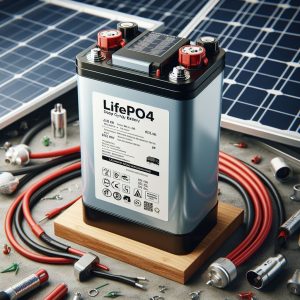A solar inverter is one of the key components in a photovoltaic (PV) system, primarily responsible for converting the direct current (DC) generated by solar panels into alternating current (AC) suitable for home use or grid connection. The efficiency of an inverter directly impacts the overall performance and power output of the PV system, making it crucial to accurately measure and evaluate inverter efficiency to ensure the efficient operation of the solar system.
Definition of Inverter Efficiency
Methods for Measuring Inverter Efficiency
To fully understand the performance of an inverter, two primary methods are commonly used within the industry:
- Peak Efficiency: This refers to the maximum efficiency that an inverter can achieve under optimal conditions. Such efficiencies are usually tested in laboratory settings under ideal load conditions.
- European Efficiency (or Weighted Efficiency): Considering the variability of actual application scenarios, European efficiency more accurately reflects the inverter’s performance in real-world environments. It is based on standardized testing procedures that simulate conversion efficiency across various load levels and calculate the weighted average total efficiency. In China, similar weighted efficiency metrics are also employed to assess the overall performance of inverters.
Calculation of Actual Efficiency
The actual efficiency of an inverter can be calculated using the following formula: \[ \text{Inverter Efficiency} = \left( \frac{\text{Input Power (DC)}}{\text{Output Power (AC)}} \right) \times 100\% \]
In practice, this involves simultaneously measuring the DC voltage and current at the inverter’s input and the AC voltage and current at its output, then applying the above formula to derive the efficiency value.
Application of Online Monitoring Tools
Modern inverters often come equipped with online monitoring capabilities, allowing users to track system performance metrics, including inverter efficiency, via internet platforms. These tools not only simplify daily management and maintenance tasks but also help promptly identify potential issues and take appropriate actions .
Factors Affecting Inverter Efficiency
Several factors can influence the efficiency of an inverter, mainly including:
- Load Factor: The efficiency of an inverter varies with the load; both too light and too heavy loads can lead to decreased efficiency.
- Temperature Impact: Excessive or insufficient working temperatures can adversely affect the internal components of the inverter, thereby reducing efficiency.
- Input Voltage Compatibility: Poor matching between the voltage output of solar panels and the input voltage requirements of the inverter may result in lower conversion efficiency.
- Quality of Equipment and Maintenance Status: High-quality inverter design and technology can improve conversion efficiency, while good maintenance practices help maintain long-term stable high-efficiency operations.
Methods to Improve Inverter Efficiency
To maximize the efficiency of an inverter, consider the following approaches:
- Selecting High-Efficiency Inverters: Prioritize brands known for their excellent reputation and higher conversion efficiency when choosing inverters.
- Optimizing Installation Location: Ensure the inverter is installed in a well-ventilated area away from heat sources to minimize unnecessary heat accumulation.
- Regular Maintenance: Keep the inverter and its accessories clean, regularly inspect electrical connections, and ensure all parts are in good condition.
- Proper Battery System Configuration: Choose appropriate energy storage solutions that ensure good compatibility between batteries and inverters, avoiding efficiency reductions due to battery-related issues .
In summary, by understanding inverter efficiency and recognizing the factors that influence it, we can better select and manage inverters, thereby achieving higher energy utilization rates and lower costs.




